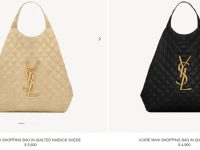How to Sell Designer-Inspired Products on DHgate: Insider Insights & Real Risks

DHgate is one of the pioneers in China’s cross-border trade platforms. Launched in Beijing in 2004, it has operated for nearly two decades.
You can find plenty of information online about DHgate’s development, but much of it is polished for public image. The real insight—the inner workings, firsthand experience, and industry truths—often comes from years of experience and informal conversations with insiders, including staff at DHgate headquarters.
The Early Gold Rush: Real or Myth?
In DHgate’s early years, some sellers indeed profited significantly, but they were the minority. Why? Because DHgate’s traffic has always been relatively limited. Those who succeeded typically had perfect timing, insider resources, and knew how to exploit the small but monetizable traffic—often through selling imitation products.
Try searching for “designer watches” on DHgate. Anyone familiar with luxury brands can immediately recognize a Rolex Submariner-style watch. Yet the product page will show no mention of “Rolex”—all brand identifiers are removed.

The seller? A 5-year-old store with high ratings and top-seller status. Everything appears legit—on the surface.
But here’s the truth: for most people, especially newcomers, DHgate is no longer the dreamland for selling replica products.
Understanding the DHgate Model
Originally targeting retail (C-end) consumers, DHgate quickly lost ground to AliExpress, which rapidly dominated the C-end cross-border market. DHgate then pivoted toward wholesale (B-end), but it could never catch up.
Why DHgate Lost to AliExpress:
User Base: AliExpress leveraged Alibaba’s massive seller base (Taobao, Tmall) for quick traction.
Traffic Scale: AliExpress receives 10x or even 100x more traffic than DHgate. In key markets like Russia, Brazil, and the U.S., AliExpress is king.
Unfair Weighting: On DHgate, non-member sellers receive minimal exposure. Paid membership brings slightly more weight, but traffic remains limited overall.
Revenue Model: Unlike AliExpress (free to join pre-2016), DHgate’s revenue comes mostly from sellers. Membership tiers (free, platinum, crystal, diamond) range from 9,800 to 16,800 RMB/year, plus countless add-ons: traffic packages, A+ plans, and the infamous “Golden Camel” (29,000 RMB/year).
DHgate recruits aggressively via city-level agents, often using misleading pitches:
“It’s easy to sell in bulk.”
“DHgate allows replica products.”
“Hurry! Discount ends soon!”
Many veterans received endless calls from agents promising “final” discounts every month. Once you’re in, upsells and fees never stop.
In contrast, AliExpress focused on sustainable, low-barrier entry—only charging commissions and ad fees. It aligned interests with sellers for long-term growth.
Imitation Products Still Exist on DHgate
Sort by price, and you’ll still find designer-inspired products.
But here’s how sellers do it:
No Brand Keywords: No direct or altered brand names (e.g., “L__V”)—they’re instantly flagged.
Photoshopped Logos: Product images are stripped of any brand identifiers.
Contact Channels: Listings prompt users to message via WhatsApp/WeChat for real photos.
QR Codes: Some sellers hide QR codes within product images linking to off-platform albums.
These tactics are used by both free and paid sellers, but all face one issue: limited traffic.
The “Protection Fee” Myth:
Some sellers are lured by agents into paying extra (Golden Camel, etc.) for traffic or review bypasses. While insider manipulation may temporarily help listings, it doesn’t fix the platform’s core problem: low traffic.
Worse, a popular listing might quickly attract brand complaints, leading to takedowns and fund freezes.
Pros of Selling Imitation Brands on DHgate
In theory, DHgate can serve as a payment and logistics platform for such products. But in reality, major payment processors like PayPal or Stripe have zero tolerance for imitation goods. Frozen funds are common.
Cons of Selling Imitation Brands on DHgate
Low Traffic: Even with paid plans, visibility is minimal.
High Risk of Frozen Funds: One successful product can trigger a takedown and account penalty.
No Long-Term Stability: Most imitation stores don’t last. Unless heavily protected, they vanish quickly.
Ultra Low Pricing: Average product price (e.g., replica bags) is <$30, including shipping. In contrast, independent sites sell similar products for $250–$400.
Internal Infighting: Sellers battle over scarce traffic, pay unnecessary fees, and end up unprofitable

Conclusion
DHgate once held promise for sellers of designer-inspired goods. Today, it’s a high-risk, low-reward game. Unless you have deep connections or insider support, expect minimal traffic, high fees, and potential losses. For most sellers, especially those in the imitation product niche, building an independent site or exploring alternative channels offers better long-term potential.





